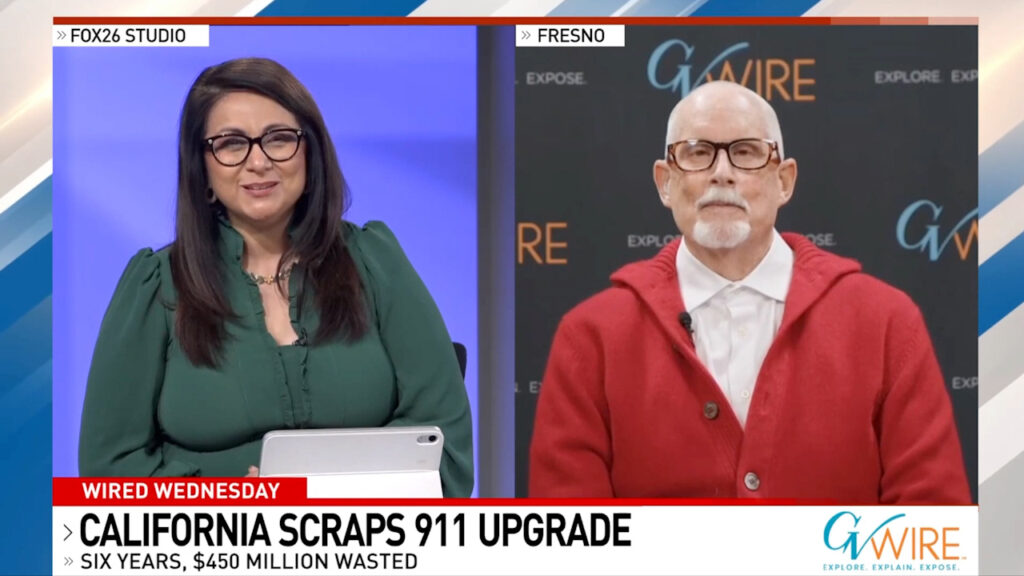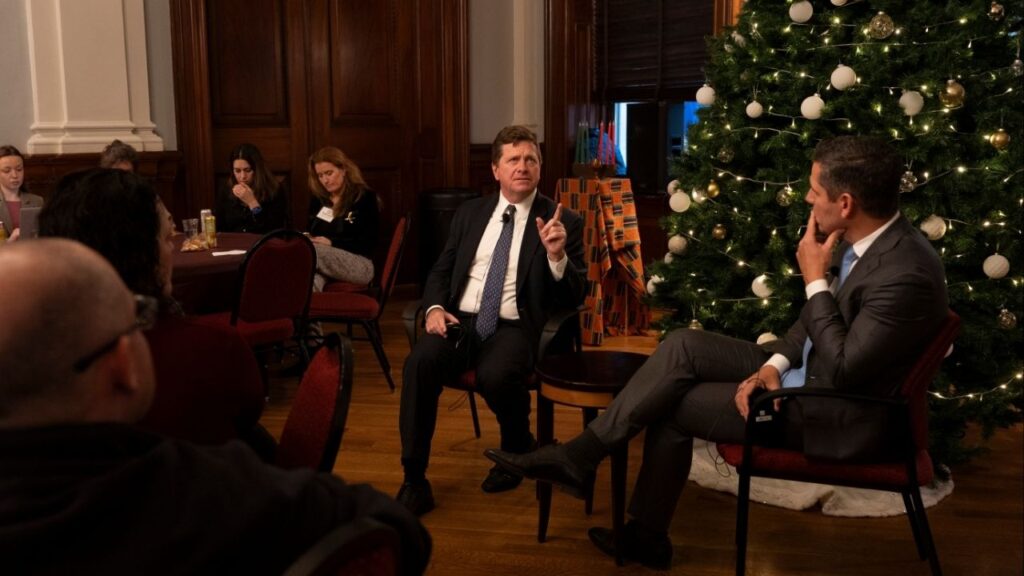In an undated image provided by Ken Parker Archtops, Ken Parker. Parker, an iconoclastic guitar maker who upended entrenched luthier traditions by producing hyper-engineered, flyweight guitars seemingly designed for an art gallery, if not the 23rd century, died on Oct. 5, 2025, at his home in Gloucester, Mass. He was 73. (Ken Parker Archtops via The New York Times)
Share
|
Getting your Trinity Audio player ready...
|
Ken Parker, an iconoclastic guitar maker who upended entrenched luthier traditions by producing hyper-engineered, flyweight guitars seemingly designed for an art gallery, if not the 23rd century, died Oct. 5 at his home in Gloucester, Massachusetts. He was 73.
His death was confirmed in a family statement, which did not cite a cause. Parker had been battling cancer, according to a page on the crowdfunding site GoFundMe.
In 1993, Parker founded Parker Guitars in Wilmington, Massachusetts, with Larry Fishman, who oversaw the management of the company and the electronics of the guitars. Parker leveraged his extensive experience in woodworking and guitar repair, along with his maverick streak, to build groundbreaking guitars that went on to be displayed at the Metropolitan Museum of Art in New York and the Smithsonian Institution in Washington.
Which is not to say he thought of guitars as art objects. “I’m a toolmaker,” he was quoted as saying in a 2007 profile in The New Yorker. “I make tools for musicians.”
In Parker’s view, guitar innovation stalled after the debut in the 1950s of hallowed models like the Fender Stratocaster and the Gibson Les Paul — guitars that Jimi Hendrix, Jimmy Page and countless others used to amplify a generation. His goal was to bundle together all available advances in technology and materials and build a guitar for a new age.
“I didn’t feel like I had some secret broth that I could smear on a Strat,” Parker said in 2023 interview with the music site Reverb. “That’s like trying to improve on a smile,” he added. “I mean, what do you do? It’s already developed.”
His alternative was the Parker Fly, a head-turning guitar that relied heavily on composite materials and looked like a prop from “Flash Gordon.”
Priced at around $2,000, the Fly was never a big seller, but it did find admirers among an array of notable musicians including Joni Mitchell, Adrian Belew and Dave Navarro of Jane’s Addiction. Trent Reznor of Nine Inch Nails once said he recorded about 80% of the guitar parts for the band’s platinum-selling 1999 album, “The Fragile,” on a Parker Fly.
In practical terms, the Fly lived up to its name, weighing about 5 pounds — roughly half of many Les Pauls. Parker accomplished this in part by shaving away all extraneous material and using lighter woods for the body, like poplar and spruce, instead of traditional hardwoods like ash or mahogany. He then reinforced the back and neck with an thin external skeleton of carbon, fiberglass and epoxy resin for strength.
The Fly also offered an array of tones. Its pickups (devices that translate string motion into an electronic form that gets passed on to an amplifier) could approximate the rich, muscular sound of classic Gibson humbuckers or the shimmer and quack of the single-coil Stratocaster pickups. Its piezo pickups could conjure the airy sounds of an acoustic.
The guitar featured a composite fingerboard with glued-on, wear-resistant stainless steel frets, locking tuners and a strikingly angular cutaway headstock that reduced weight and helped its overall balance. The Fly also had a distinctive flat-spring vibrato system to improve responsiveness over a standard tremolo bar.
And then there were its looks. Everyone seemed to have an opinion. In the Reverb interview, Parker recalled that Mitchell once told him: “Looks like you found it on a beach. But then it also looks like it came from outer space.” Keith Richards of the Rolling Stones asked, “Nice guitar, but why does it have to look like a bleeding assault rifle?”
Kenneth Murray Parker was born Aug. 25, 1952, in New Haven, Connecticut, to Richard Parker, a Methodist pastor, and Grace (Keefer) Parker, who taught elementary and Sunday school.
After graduating from high school in 1970, he attended Goddard College in Vermont for less than a year. He then moved to Rochester, New York, where he worked in a clock factory and for a furniture maker and continued to experiment with building guitars.
He later spent years repairing guitars at Stuyvesant Music in Manhattan, a shop frequented by standout players like Andy Summers of the Police and Robert Fripp of King Crimson — an apprenticeship of sorts that propelled him toward starting his own guitar line.
Parker Guitars proved a culmination of a dream, but a harsh lesson in the realities of business. Parker Guitars sold only about 35,000 instruments during Parker’s tenure there, Fishman said in an interview. He often said that they ran aground trying to sell a $6,000 guitar for $2,000.
He sold his stake in 2003, only to reemerge later that decade with Ken Parker Archtops, a bespoke attempt to do for acoustic guitars what the Fly had done for electric ones. Archtops, popularized around the turn of the 20th century by Orville Gibson, the founder of the Gibson guitar company, were not a hot category in an industry dominated by flattop acoustics.
But Parker had been in love with them since his Rochester days, when his guitar teacher had a beautiful Gibson L-12 model from the 1940s. He also believed that such guitars, with their convex tops, similar to a violin or cello, offered a distinct palette of sonic characteristics and greater tonal versatility.
As with the Fly, his archtops had a futuristic look, starting with their strikingly thin bodies. Instead of a traditional round sound hole in the middle of the guitar — or the violin-like F holes seen on traditional archtops — he designed a banana-shaped groove on the upper edge to better direct sound to the player.
Parker is survived by his partner, Susan Kolwicz; a sister, Debby; and two brothers, Alan Parker and Petero Sabune.
—
This article originally appeared in The New York Times.
By Alex Williams
c. 2025 The New York Times Company
RELATED TOPICS:
Categories

Comedy Legend Tim Allen Announces Fresno Show
















